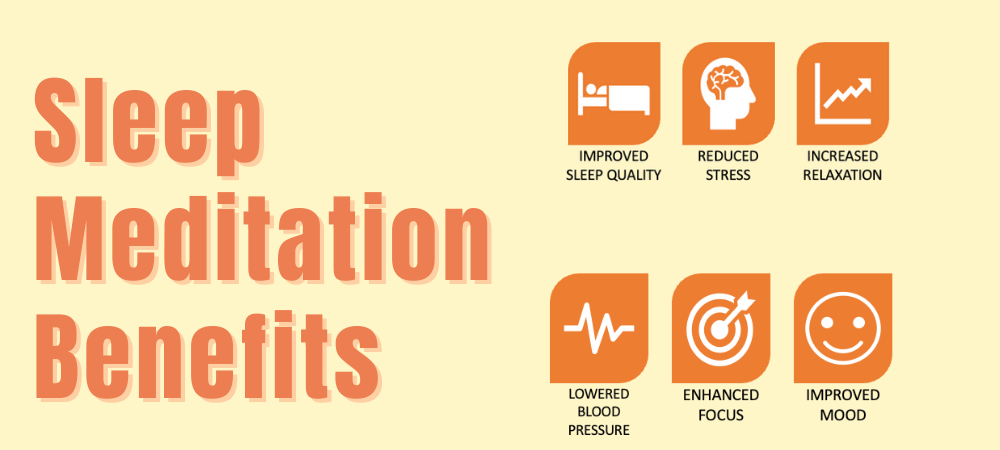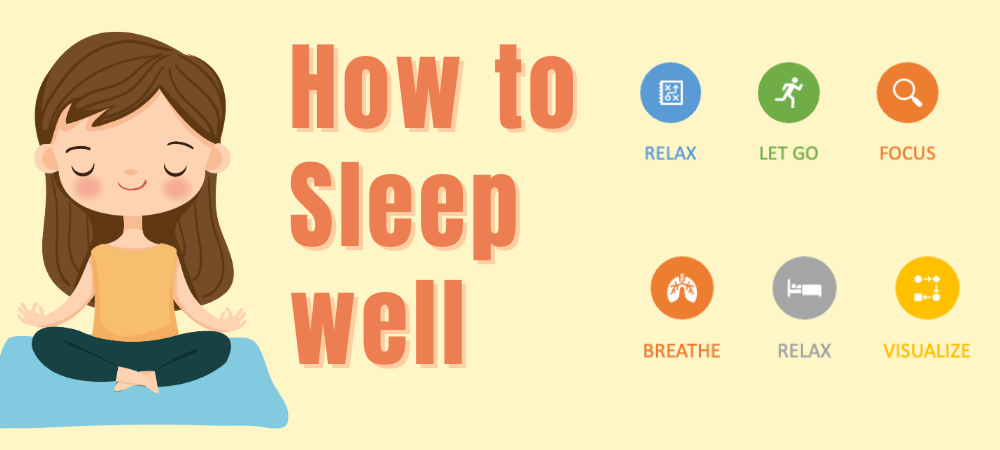Introduction to Sleep Meditation (Yog Nidra)
Tired of tossing and turning all night? Discover the power of sleep meditation for deeper relaxation and better sleep quality.
Our cerebral, emotional, and physical health depends on getting enough sleep. It supports the preservation of our general well-being, efficiency, and standard of living. Our bodies can repair and regenerate while our minds consolidate memories, process emotions, and control our mood when we get enough sleep.
However, a lot of us have trouble sleeping enough, whether it’s because of insomnia, stress, or another sleep disorder.
This lack of sound sleep can have a number of detrimental effects, such as heightened stress, irritability, and exhaustion, as well as diminished cognitive ability, memory, and general health.
The effectiveness of meditation in increasing both the amount and quality of sleep has been demonstrated. Meditation can facilitate restful slumber by promoting relaxation and helping us let go of tension and stress. Mediation can enhance our capacity for concentration and mental clarity, which lessens the anxiety and racing ideas that can keep us up at night.

By increasing the production of melatonin, a hormone that controls slumber, meditation can also help the body’s circadian rhythm or the natural cycle of sleep and wakefulness. Regular meditation has been shown to raise melatonin levels and enhance the quantity, quality, and effectiveness of slumber.
Overall, incorporating meditation into our daily routines can help our slumber and overall well-being. Anyone seeking a deeper, more restorative night’s sleep should consider using sleep mediation, which can be accomplished through gradual muscular relaxation, guided visualisation, or other techniques.
Sleep meditation is a meditative method that prepares the mind and body for slumber. This form of meditation is designed to help individuals who have trouble falling asleep, remaining asleep, or getting restorative sleep. Sleep meditation can improve your slumber by calming your mind and healing your body.
Sleep meditation can also help you sleep better by improving the content of your sleep. Sleep meditation can help you fall asleep quicker, sleep longer, and wake up feeling more refreshed and energised.
Sleep meditation can take many forms, including guided imagery, progressive muscular relaxation, and awareness meditation. Each of these methods is intended to help you release stress and anxiety while also promoting relaxation and restful slumber.
Incorporating sleep meditation into your nighttime practice can help you fight insomnia and other sleep problems.
You may find that by establishing a tranquil, relaxing atmosphere for sleep and practising sleep meditation on a regular basis, you are able to get the restful sleep you require to wake up feeling rejuvenated and ready to face the day.
What exactly is Sleep Meditation?
Definition
Sleep meditation is a form of meditation that focuses on promoting restful slumber. It entails using mindfulness methods to help quiet your thoughts and relax your body before going to slumber. Sleep meditation, as opposed to normal meditation, is usually done in the evening or right before nighttime to help you fall asleep quicker and get better quality sleep
Advantages
The advantages of slumber meditation are numerous. You can enhance your sleep quality, decrease stress, and relax more by practising sleep meditation. Sleep meditation has also been shown to improve general physical and mental health by reducing worry and depression signs, lowering blood pressure, and improving overall physical and mental health.
Sleep meditation can also help your ability to focus and concentrate, as well as your happiness and a general feeling of well-being. You may find that by having more restful sleep, you have more energy throughout the day and are better able to handle stress and other challenges.
9 Sleep Meditation Techniques
There are numerous sleep meditation methods that you can use to encourage improved sleep. Guided imagery, progressive muscle relaxation, and awareness meditation are some of the most popular techniques.
- Guided visualization is imagining a serene location, such as a beach or forest, and completely experiencing the relaxing sensations associated with being there.
- White Noise has also proved to be a sound means to sleep in a meditative manner also known in the eastern world as Yog Nidra. Yoga Nidra is a guided meditation practise that entails profound relaxation and imagery, resulting in a level of awareness that is somewhere between waking and sleep.
- Matra Mediation: Repeating a relaxing mantra or affirmation to oneself, such as “I am tranquil and relaxed” or “I am glad for this time of rest,” is an example of mantra repetition.
- Progressive Muscle Relaxation: This technique includes tensing and then relaxing each muscle group in your body, beginning with your feet and working your way up to relieve physical stress and promote relaxation.
- Mindful Breathing entails paying attention to your breath, experiencing any sensations, and letting go of any distracting thoughts.
- Regular Practice: The secret to getting the benefits of any sleep meditation technique is to practise it every day. You can improve your sleep quality and have a more peaceful, rejuvenating sleep experience by incorporating sleep meditation into your bedtime routine.
- Mindfulness meditation involves focusing your attention on your breath while letting go of any disturbing thoughts or emotions.
- Body Scan: Lying down, bring your attention to different areas of your body, beginning with your toes and working your way up to your head, intentionally relaxing each part of your body as you go
- Breath Awareness is focusing on the breath, breathing deeply and gently expelling, enabling the breath to become calm and steady.
How to Do Sleep Meditation

Setting the Scene
It is critical for success to create a calm atmosphere for sleep meditation. Begin by locating a peaceful, dark area where you will not be bothered. Dim the lights or use soft lighting to drown out any background noise, and try using a white noise generator or soothing music to drown out any background noise. Check that the weather is suitable, not too hot or chilly, and think about using a comfy pillow or cushion to support your body.
Preparation
Take a few minutes before beginning your sleep meditation to ready your thoughts and body. Begin with deep breathing techniques, inhaling deeply through your nostrils and gently exhaling through your lips. Gentle exercises, such as neck rotations, can also be tried. You might want to take a warm bath or shower to calm your limbs and prepare for slumber.
Practice
Begin your Sleep meditation by lying easily on your back and closing your eyes. Take a few deep breaths and concentrate on your breathing as you gently inhale and release. Concentrate on the feeling of air flowing in and out of your body as you breathe. If your thoughts begin to stray, softly bring them back to your breath.
Next, attempt guided visualisation by picturing yourself in a calm and serene environment, such as a seashore or a forest. Visualize yourself there and concentrate on the sights, noises, and scents.
Let go of any concerns or thoughts that arise and simply appreciate the present.
You can also attempt progressive muscle relaxation, which involves tensing and then relaxing each muscle group in your body, beginning with your toes and working your way up to your cranium.
It’s typical for your thoughts to wander during sleep meditation, so don’t be disheartened if you become sidetracked. Simply recognise the idea and return your attention to your breathing or meditation. Sleep meditation, with practice, can become a powerful instrument for encouraging restful slumber and general well-being.
Tips for Sleeping better
Consistency
One of the keys to success with sleep meditation is consistency. It’s important to make sleep meditation a regular part of your bedtime routine. Try setting aside a specific time each night to practice, and stick to it as closely as possible.
Patience
While some people may notice immediate benefits from sleep meditation, it’s important to remember that it may take time to see results. Don’t get discouraged if you don’t notice changes right away. Be patient and stick with it, and you may start to notice improvements in your sleep quality and overall well-being.
Other Tips
In addition to consistent practice and patience, there are other things you can do to set yourself up for success with sleep meditation. Avoiding caffeine and screens before bed can help you relax and get into a restful state. Practicing good sleep hygiene, such as creating a comfortable sleeping environment and sticking to a regular sleep schedule, can also help improve the quality of your sleep. And remember, if you have any concerns about your sleep or overall health, be sure to talk to your healthcare provider.
Summary
- 🌙 Sleep meditation is a relaxation technique that helps calm the mind and body before sleeping.
- 😴 It aims to reduce stress, anxiety, and negative thoughts that can interfere with sleep, leading to a more restful and rejuvenating night’s sleep.
- 🧘♂️ It typically involves listening to guided meditations or calming music, focusing on the breath, and visualizing peaceful scenes or sensations.
- 💤 Sleep meditation can improve sleep quality, reduce stress levels, and promote overall well-being and mental health.
- 🌟 Practising sleep hygiene, such as creating a relaxing bedtime routine and minimizing exposure to screens, can also complement sleep meditation for better sleep.
